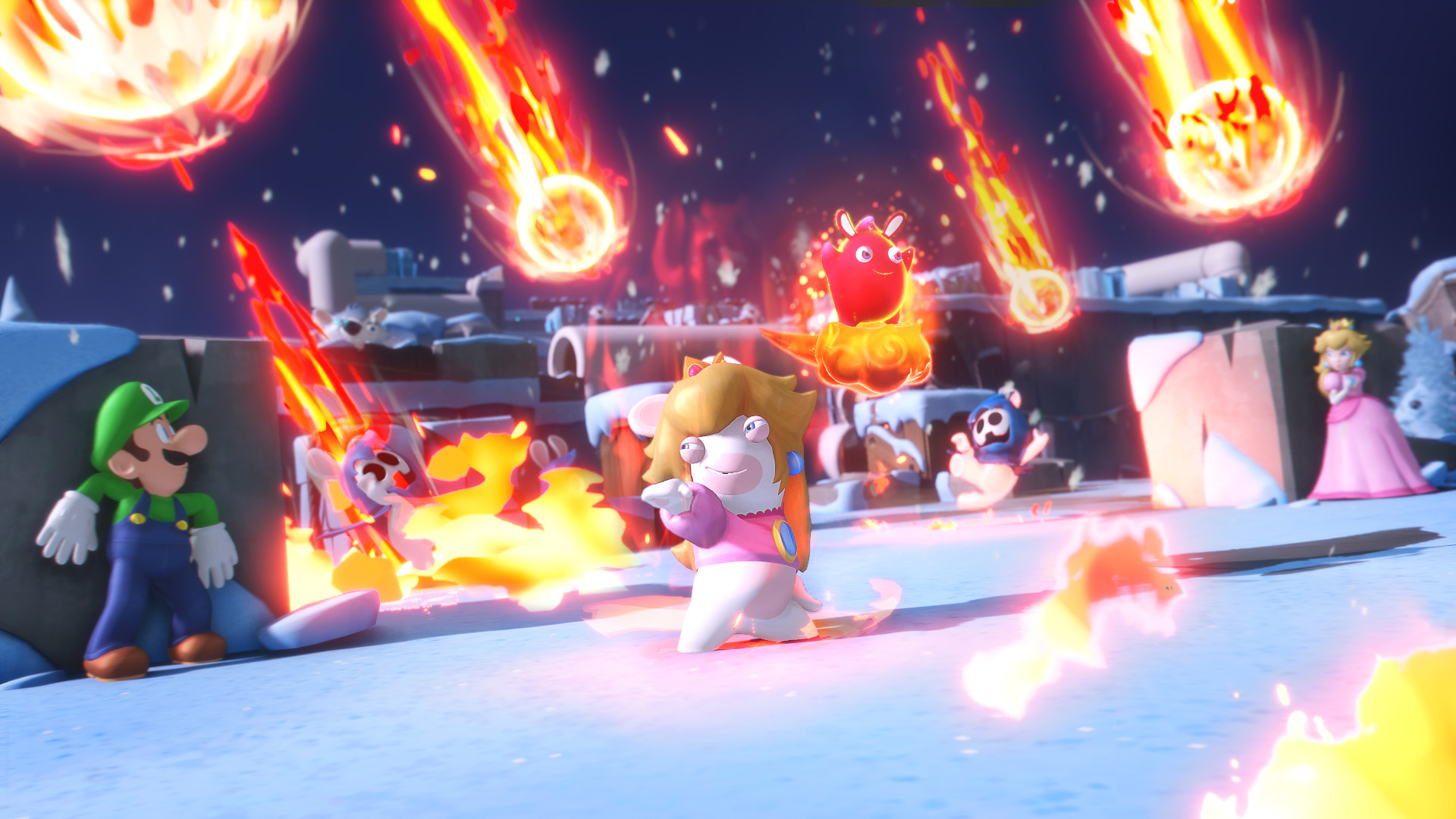Mario + Rabbids Sparks of Hope is a worthwhile sequel with interesting ideas
2017’s Mario + Rabbids Kingdom Battle was an absolute surprise to me.
Somehow, Ubisoft took Nintendo’s Mushroom Kingdom and Ubisoft’s lesser-known Rabbids franchise and created one of the best turn-based strategy games of the past decade. It shouldn’t have worked, but it did — and really well. Fast forward to 2022, and the title’s sequel remains just as compelling while managing to build on its predecessor in meaningful ways.
Still, part of me wishes the Rabbids weren’t invited to the party.
Mario + Rabbids Sparks of Hope‘s plot is standard Nintendo fair. A giant flying manta ray attacks Mario, Luigi, Princess Peach and a bunch of Rabbids that look precisely like them. Why do they look like them? Who knows, but also, who cares? As the plot unfolds, you’ll meet Cursa, the being that controls the manta ray from the opening sequence, and also learn more about the inky darkness that’s spreading across the title’s world.
Like the first Mario + Rabbids, I found myself not paying much attention to Sparks of Hopes‘ plot. When it comes to this series, all I care about is the excellently designed turn-based action, and thankfully, Sparks of Hope delivers in that department.
This time around, Sparks of Hope adds a few real-time elements to the mix instead of adopting a more standard turn-based grid system. You’re able to actively control your squad’s movement, just as you would in most third-person action titles. Do you want to stand in the open in an effort to take down an enemy as quickly as possible or hide behind cover and pop shots from safety (the latter is almost always the best option). You also need to keep in mind that cover is destructible, which adds another variable to the title’s already deep turn-based gameplay.
A glowing area on the ground shows how far your character can move along with what you can and can’t do, such as jumping or activating other special abilities powered by ‘Sparks.’
This system makes the game’s turn-based combat feel far more dynamic than it actually is, simply because the grid isn’t present on the screen. In a sense, Sparks of Hope offers the illusion of more freedom, despite the battle system not being that different from Kingdom Battle‘s in most respects. Sometimes that’s all it takes to make a turn-based combat system feel more fun while retaining the genre’s strategic nature. I hope to see this take on the genre adopted by other series.
Delving deeper into the combat system, Sparks of Hope‘s main change is the addition of Sparks, replacing the rampant weapon swapping from Kingdom Battle. As you likely already guessed, Sparks feature various strengths/weaknesses on top of special abilities. For example, some are focused on fire damage, while others emphasize replenishing your squad’s HP. Later in the game, you’re eventually able to equip two Sparks per character, adding further depth to the system. While I initially didn’t like Sparks of Hope‘s lack of equipable weapons and armour that improve your team’s performance, it helps make the game feel less like “XCOM for babies” and more like its own unique take on the turn-based genre.

One other change I really like about Sparks of Hope is the flow of the title’s overall structure. Instead of a standard Mario platformer-like overworld in Kingdom Battle, Ubisoft and Nintendo’s latest turn-based epic features several individual planets that offer main quests, side missions and other secrets/unlockables. There are also enemies and other Goombas wandering around the map with whom you can engage in combat if you happen to be under-levelled for a mission. It’s worth mentioning that the worlds themselves are charming and mostly based on seasons, including the never-ending autumn of ‘Sleepy Hallow’ and the snowy cliffs of ‘Pristine Peaks.’
I’m also impressed by how varied the missions are. Evoking Final Fantasy Tactics Advance variety in some ways, levels are no longer solely focused on wiping out every enemy on the map and become surprisingly inventive at times, particularly when it comes to boss fights.
My only real issue with Sparks of Hope is that it sometimes doesn’t look that great and really shows the now 6-year-old Switch’s age. Though, to be fair, this is more the Switch’s fault than the game’s development team. Like a lot of recent Switch titles, unsightly jagged issues are rampant, and in a twist I didn’t expect, load times feel long (this might be because I’m used to the Xbox Series X’s snappy loading).

I also feel Ubisoft’s Rabbids don’t really need to be here. At times they can be cute and funny, but they’re still pretty annoying overall. Mario + Rabbids Sparks of Hope could just as easily be the sequel to Super Mario RPG that we never got in the 90s, and would probably be a better game for it. The Rabbids feel like they’re forced into Sparks of Hope — even more so than Kingdom Battle.
Despite these shortcomings, Sparks of Hope is one of the best Switch titles of the year (next to Splatoon 3, of course). If you’re interested in turn-based strategy titles, Ubisoft’s latest remains one of the best.
Mario + Rabbids Sparks of Hope is available for the Nintendo Switch for $79.99.
MobileSyrup utilizes affiliate partnerships. These partnerships do not influence our editorial content, though we may earn a commission on purchases made via these links that helps fund the journalism provided free on our website.
For all the latest Technology News Click Here
For the latest news and updates, follow us on Google News.
